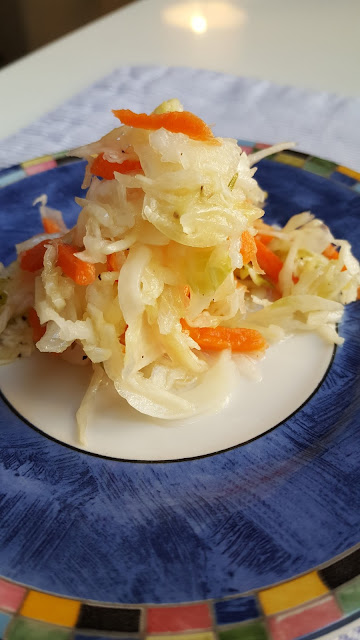Why I Rarely Eat Dessert Out
This recent blog comment about Quality Meats and dessert miscommunication (leading to a hospital visit) reminded me of my own food allergy rule: don’t eat desserts out. Why? Several reasons. First, in over my 30 years of dining out they almost always get it wrong. An unwanted nutty cookie or biscotti, a sprinkle of nuts around the plate for decoration, a marzipan layer under the frosting that no one knew about – the list of scary visible and invisible food allergy dessert errors are endless.
One of the problems lies with how a kitchen works. Smaller kitchens don’t always make their desserts in house, meaning a third party makes them and the all important labels are often discarded once the desserts are received. So, your server may not know what’s in your dessert and have little way of finding out and/or they make an honest (but ill informed) assumption that could be dangerous for a food allergic diner. For example, a server may assume that a "plain chocolate flourless cake" is just plain when in fact it’s "flourless" because it’s made with a nut flour. Even a conversation with a manager may not help because if the kitchen didn’t make the dessert and the labels are long gone, they, too, will be at a loss.
Another common issue is communication with the pastry chef. In more expensive restaurants, they have pastry chefs and a pastry (i.e. cold) station which is separate from the hot food and the appetizer sections. Often even when you’ve had the food allergy conversation with the manager or chef, the pastry chef may not get the message. In this scenario, a nut-free table that has had a great nut-free meal can be presented with a sorbet with an almond tuille lovingly placed between scoops. It’s not meant maliciously; it's just the pastry station didn’t get the message: no nuts.
So, often my safe dessert, if I want to/have to order one, is fresh berries, as it should be straight forward. And even with that I remind the sever: no cream (dairy intolerant) and no cookie (usually nutty), no sprinkle of anything, just dry – only berries and even that order comes to the table wrong too often.
Think I’m over-thinking this? Think again. Several chef colleagues have confirmed that I should stay away from desserts at their establishments: sorbets are often scooped with contaminated spoons, or chocolate sources are rarely from nut-free facilities.
There are many wonderful, safe exceptions, of course: restaurants that have dedicated allergen-friendly menus, or are white tablecloth and make everything from scratch (and keep their labels), or restaurants that make you or your family something special like Blue Smoke did here for my birthday.
But overall, the best solution for right now in 2011, and the one I recommend when dining out, especially at a new, untested restaurant is: skip dessert. It eliminates that particular risk and maximizes food allergy safety and enjoyment.
How you handle the dessert situation?
One of the problems lies with how a kitchen works. Smaller kitchens don’t always make their desserts in house, meaning a third party makes them and the all important labels are often discarded once the desserts are received. So, your server may not know what’s in your dessert and have little way of finding out and/or they make an honest (but ill informed) assumption that could be dangerous for a food allergic diner. For example, a server may assume that a "plain chocolate flourless cake" is just plain when in fact it’s "flourless" because it’s made with a nut flour. Even a conversation with a manager may not help because if the kitchen didn’t make the dessert and the labels are long gone, they, too, will be at a loss.
Another common issue is communication with the pastry chef. In more expensive restaurants, they have pastry chefs and a pastry (i.e. cold) station which is separate from the hot food and the appetizer sections. Often even when you’ve had the food allergy conversation with the manager or chef, the pastry chef may not get the message. In this scenario, a nut-free table that has had a great nut-free meal can be presented with a sorbet with an almond tuille lovingly placed between scoops. It’s not meant maliciously; it's just the pastry station didn’t get the message: no nuts.
So, often my safe dessert, if I want to/have to order one, is fresh berries, as it should be straight forward. And even with that I remind the sever: no cream (dairy intolerant) and no cookie (usually nutty), no sprinkle of anything, just dry – only berries and even that order comes to the table wrong too often.
Think I’m over-thinking this? Think again. Several chef colleagues have confirmed that I should stay away from desserts at their establishments: sorbets are often scooped with contaminated spoons, or chocolate sources are rarely from nut-free facilities.
There are many wonderful, safe exceptions, of course: restaurants that have dedicated allergen-friendly menus, or are white tablecloth and make everything from scratch (and keep their labels), or restaurants that make you or your family something special like Blue Smoke did here for my birthday.
But overall, the best solution for right now in 2011, and the one I recommend when dining out, especially at a new, untested restaurant is: skip dessert. It eliminates that particular risk and maximizes food allergy safety and enjoyment.
How you handle the dessert situation?


Comments